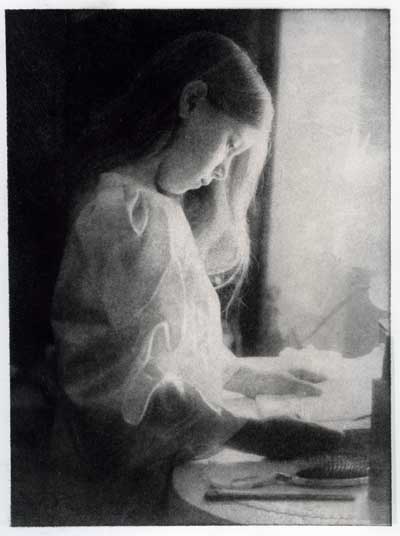Film Photographer Spotlight: George L Smyth
George L Smyth, is a Maryland photographer who specializes in Bromoil prints. His history with photography goes back to before digital was available, on a trip to Wales where he bought an Olympus point and shoot film camera. From there, he went to the local library and picked up many photography books, starting with Ansel Adams: The making of 40 Photographs. This is when he realized that photography was a matter of art, and not simply "a matter of clicking a shutter and seeing the result." Music has a place in his work, which he says inspires him. He spent two years studying music theory and composition.
His advice to aspiring film photographers: Having "the willingness and even love of embracing restrictions."
After reading "The Negative and The Print" by Adams, Smyth put together his own darkroom. "This is where the art of the craft was cemented into my mindset and I came to realize that with total control I now had the ability of total expression."
"This print is the turning point of my creative efforts and fortunately came rather early in my artistic development. It is an image of my two children looking for newts by a pond. I photographed the scene with Kodak High-Speed Infrared film shot at EI200 through a #25 filter. The reason this was a turning point was that until I committed this image to paper I had been primarily been trying to replicate the scene before me. Infrared moved me further away from reality, which was the direction I did not realize I had intended to take all along. The abstract scene that had been captured on the negative allowed me to print this many different ways, offering a range of expression I had not yet experienced."
This is a photograph of Smyth's parents, which he says is probably one of his most favorites of them. It was taken with a Graflex Century Graphic. "Preparing a 4x5" camera takes a little time and when I was finally able to remove the dark slide from the film holder I saw that my father had just said something to my mother so I immediately released the shutter. I went on to expose seven more sheets of film but none of them ever made it to paper since the first exposure gave me everything I wanted to say about them. My father is no longer with us and my mother recently celebrated her 87th birthday. This print has a prominent place in her house as well as mine."
"I offer this image, which was the first Bromoil print I ever made. The image was photographed with my Nikon FM2N using TMax 100 film. As I walked down the hall of my apartment I passed my daughter's room, where she was looking at a book. I quickly grabbed my camera and exposed a few frames. I was never able to make a successful print because the lamp totally blew things out. The process allowed me to mask the lamp so that it is not a major part of the image. I have now embraced Bromoil as the best means to express much of my artwork."
His advice to aspiring film photographers: Having "the willingness and even love of embracing restrictions."
Photographing unreality
After reading "The Negative and The Print" by Adams, Smyth put together his own darkroom. "This is where the art of the craft was cemented into my mindset and I came to realize that with total control I now had the ability of total expression." |
| Discovery (George L. Smyth, 1995) |
Slowing down
Smyth says he finds the ability to take hundreds of photos with digital photography a drag on his creativity. "I need focus and there is nothing that forces more focus than the knowledge that if I am going to expose a sheet of large format film then [it will] take five minutes to set up the camera and tripod, set the aperture and speed, and focus the lens... but also there is a financial cost of exposing twenty square inches of film that will be individually developed at a later time." He finds using medium format very meditative, in that he must be "drinking in the scene" and visualize what he wants to say through his final print. Technical considerations are quick, he says, but without the creative aspect, he finds images end up saying more about a camera than the individual who took the photo.
 |
| Mom and Dad (George L. Smyth, 2001) |
This is a photograph of Smyth's parents, which he says is probably one of his most favorites of them. It was taken with a Graflex Century Graphic. "Preparing a 4x5" camera takes a little time and when I was finally able to remove the dark slide from the film holder I saw that my father had just said something to my mother so I immediately released the shutter. I went on to expose seven more sheets of film but none of them ever made it to paper since the first exposure gave me everything I wanted to say about them. My father is no longer with us and my mother recently celebrated her 87th birthday. This print has a prominent place in her house as well as mine."
Bromoil Prints
Smyth decided to learn the Bromoil process around ten years ago. Bromoil Prints are much like the oil print process which starts as a print on silver-bromide paper after which is bleached, hardened and fix. This photographic process form the early 20th century, ends up replacing the silver from the print with lithographic ink. Smyth, who taught himself the process through a book, says he struggled at first, but once he made his first successful print, he was hooked.
 |
| Katie (George L. Smyth, 1994/2007) |
You can find more of George's work at:
Comments
Post a Comment